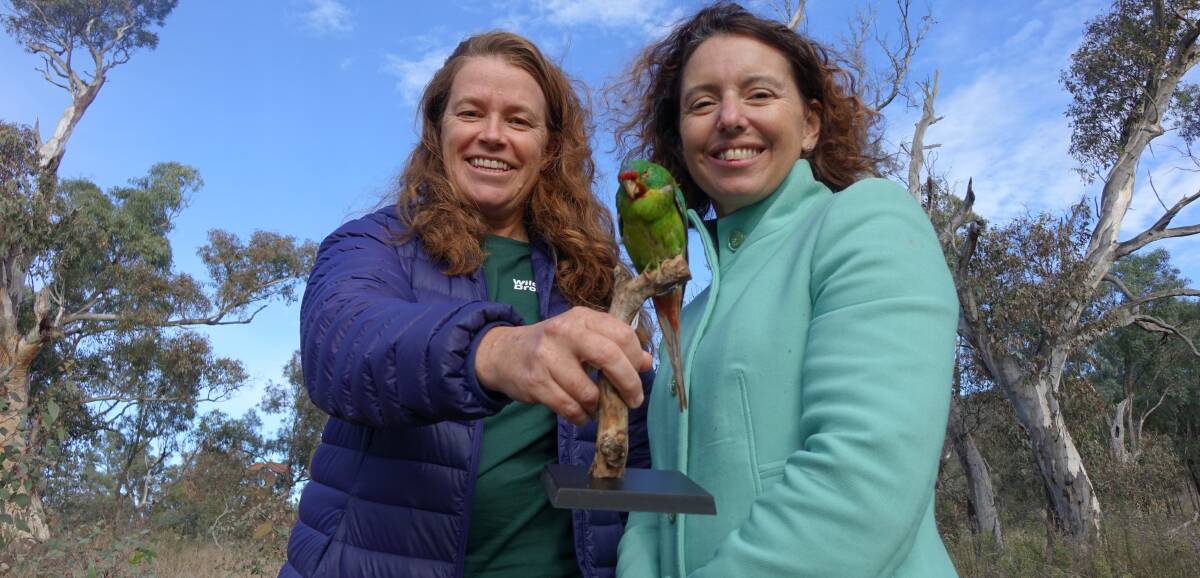One of the most charismatic - and most threatened - of Australia's birds has landed in Canberra.
Subscribe now for unlimited access.
or signup to continue reading
There are only thought to be 300 swift parrots remaining anywhere but about 50 of them have stopped off in Canberra on their migration north from Tasmania.
"That's so special because there are so few of them left in the wild," ANU ecologist Debra Saunders said.
Her emotion was a mixture of thrill and sadness because of the dwindling numbers of the beautiful bird. "I've seen flocks times this size in my lifetime and my daughters will never see that," Dr Saunders said.
Apart from their rarity, they are very charismatic birds which thrive on nectar like a drug.
"They're like the larrikins of the forest. They get excited. They get a bit high on the sugar load. They scramble around amongst the branches, and they love wild weather."
In a somewhat surreal twist, she had a mounted dead bird at a media event in a clearing at Callum Brae Nature Reserve in Symonston where the live bird has been spotted.
But she used it to tell a story: "When I first started working on this species I moved to Canberra and I went to the National Museum, and I saw the paradise parrot on a stick and I made a promise to myself that I would not let this be the future of the swift parrot."

But the odds are against it. The swift parrot likes the cool climate of south-east Tasmania but its habitat is being threatened by logging. Trees are their natural habitat and the trees are going.
ACT environment minister Rebecca Vassarotti said at the event that the plight of the parrot showed "the need for stronger national environment laws to protect native forests and swift parrots."
"This beautiful parrot sums up the Australian character of enjoying nature," the Greens minister said, "but they can only be as resilient as nature allows them to be."
She wanted the federal government to toughen up environmental protection laws so that places where endangered animals breed are protected. The ACT Government was doing its bit, she said, but by the nature of migratory birds, in particular, no single state or territory could save a species by itself.
Dr Saunders said that ordinary Canberrans might be able to help the swift parrot by planting trees - but not too close to windows. The parrot, like other birds, can see its own reflection and fly towards it, killing itself with the impact on the glass.
By the way, the presence of a dead parrot on a mount at the media event did not prompt any mirth about a famous Monty Python sketch involving a dead parrot.
Our journalists work hard to provide local, up-to-date news to the community. This is how you can continue to access our trusted content:
- Bookmark canberratimes.com.au
- Download our app
- Make sure you are signed up for our breaking and regular headlines newsletters
- Follow us on Twitter
- Follow us on Instagram


